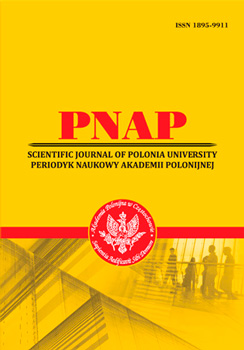EFFECTIVENESS AND SAFETY OF STUDENTS’ WORK WITH DIGITAL LEARNING ECOSYSTEMS
Abstract
The application of digital ecosystems to various activity types is an objective reality. One of the areas of activity that is currently undergoing a stage of active digitalisation is the educational system. As a result, a separate segment of digital ecosystems appeared − the digital learning ecosystem. The essential issues in the operation of digital learning ecosystems are the learner’s efficiency and safety when interacting with them. This issue has become relevant due to the recent transition to a remote learning mode because control of the effectiveness and safety of interaction with the digital learning ecosystem has decreased. Thus, the paper puts forward a hypothesis: the efficiency and safeness of a student’s work with a digital learning ecosystem in a remote work depend on three components: the level of digital competence; ergonomics of the digital learning ecosystem; ergonomic organisation of the workplace. An experiment was carried out to research the hypothesis. The students in the first year of studying the bachelor’s qualification level from the Simon Kuznets Kharkiv National University of Economics took part. The Personal Learning Systems was chosen as the studied object. The hypothesis got confirmation during the study. In addition, a heuristic model of student interaction with a digital learning ecosystem was proposed based on the results. According to the model, teaching students such interdisciplinary sciences as cognitive and organisational ergonomics and building an individual learning trajectory will increase the effectiveness of students’ interaction with digital learning ecosystems.
References
2. Baptista, J., Stein, M.-K., Klein, S., Watson-Manheim, M.B., Lee, J. (2020). Digital work and organisational transformation: Emergent Digital/Human work configurations in modern organisations. Journal of Strategic Information Systems, 29, 1-10.
3. Oeij, P.R.A., Dhondt, S., Rus, D., Van Hootegem, G. (2019). The digital transformation requires workplace innovation: an introduction. Int. J. Technology Transfer and Commercialisation, 16(3), 199-207.
4. Protasenko, O., Mygal, G. (2021). Human Factors: The Problem of Man-machine Interaction in the Digitalization Conditions. Scientific Journal of Polonia University, 48(5), 198-210.
5. Hasle, P., & Sørensen, O. (2013). Employees as individually and collectively acting subjects – key contributions from Nordic working life research. Nordic Journal of Working Life Studies, 3(3), 9-30.
6. Stich, J. F., Farley, S., Cooper, C., Tarafdar, M. (2015). Information and communication technology demands: outcomes and interventions. Journal of Organizational Effectiveness: People and Performance, 2(4), 327-345.
7. Protasenko, O. F., & Mygal, H. V. (2020). Human Resources Are a Factor in Applying of Man-Machine Systems Safety. Komunalne hospodarstvo mist – Municipal economy of cities, 6(159), 139-146.
8. Soldatova G. U., & Rasskazova E. I. (2015). Modeli peredachi opyta mezhdu pokoleniyami pri osvoenii i ispolzovanii Interneta [Models for the transfer of experience between generations in the development and use of the Internet]. Voprosy psihologii – Questions of psychology, 2, 56-66 [in Russian].
9. Briscoe, G., Sadedin, S., De Wilde, Ph. (2011). Digital Ecosystems: Ecosystem-Oriented Architectures. Natural Computing, 10, 1143.
10. Protasenko, O. F., & Myhal, H. V. (2021). The viability as an emergent property of selforganizing systems. Komunalne hospodarstvo mist – Municipal economy of cities, 1(161), 307-314.
11. Cuerdo-Vilches, T., Navas-Martín, M.А., Oteiza, I. (2021). Working from Home: Is Our Housing Ready? International Journal of Environmental Research and Public Health, 18, 7329.
12. Blundell, C., Lee, K-T., Nykvist, S. (2016). Digital learning in schools: Conceptualizing the challenges and influences on teacher practice. Journal of Information Technology Education: Research, 15, 535-560.
13. Lin, M.-H., Chen, H.-Ch., Liu, K.-Sh. (2017). A Study of the Effects of Digital Learning on Learning Motivation and Learning Outcome. EURASIA Journal of Mathematics Science and Technology Education, 13(7), 3553-3564.
14. Myhal, H.V., & Protasenko, O.F. (2019). Inzheneriia liudskoho chynnyka v suchasnii osviti [Human Factor Engineering in Modern Education]. Vcheni zapysky TNU imeni V.I. Vernadskoho. Seriia: Tekhnichni nauky – Scientific notes of Taurida National V.I. Vernadsky University. Series: Technical Sciences, 6, 30(69), 1-6 [in Ukrainian].
15. Stern, H., & Becker, T. (2019). Concept and Evaluation of a Method for the Integration of Human Factors into Human-Oriented Work Design in Cyber-Physical Production Systems. Sustainability, 11(16), 4508.
16. Sun, S. et al. (2020). Healthy Operator 4.0: A Human Cyber-Physical System Architecture for Smart Workplaces. Sensors, 20, 2011.
17. Mygal, G. V., Protasenko, O. F., Mykhailova, E. О. (2021). The Design Principles of Man-machine Interaction in a Digital Environment. Otkrytye informacionnye i kompyuternye tehnologii – Open information and computer integrated technologies, 93, 190-204.
Abstract views: 374 PDF Downloads: 228







